Pacific Marine Mammal Center expects to move into temporary site in November
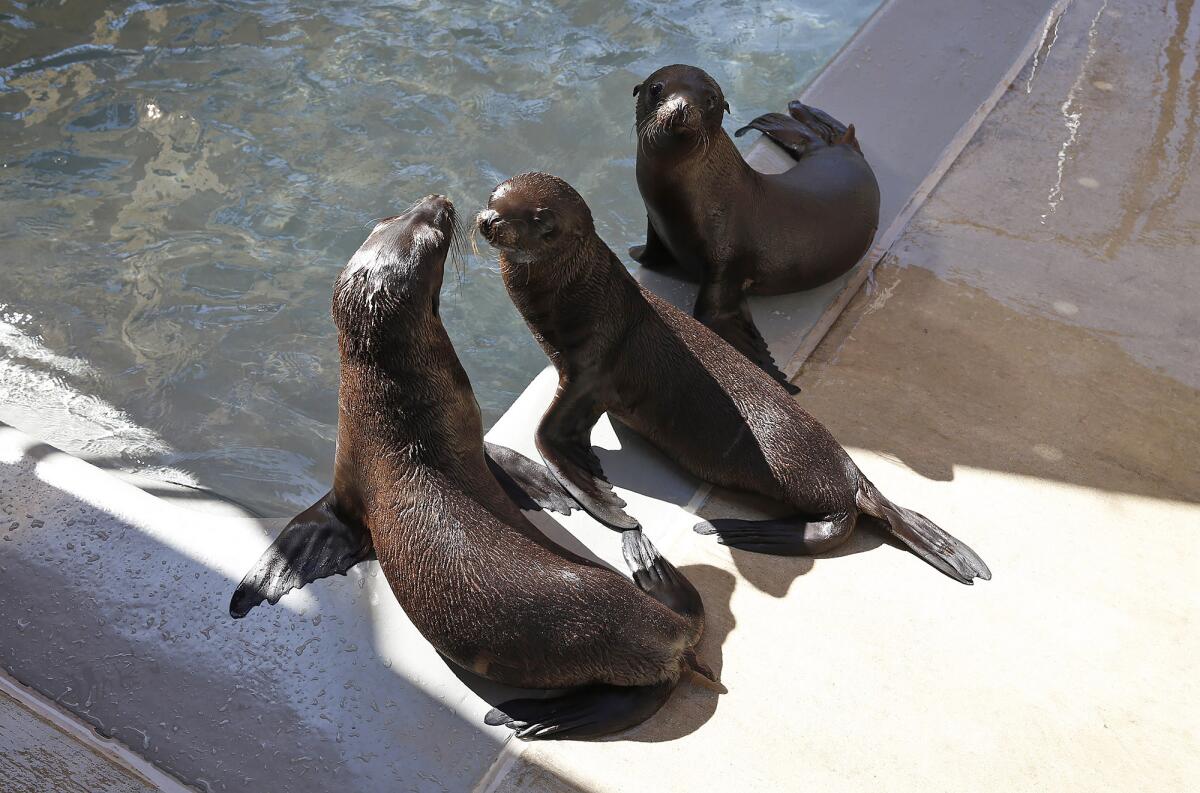
Following its busiest time of year, the Pacific Marine Mammal Center in Laguna Beach is getting set to move operations over to a temporary location due south of its big red barn.
Officials broke ground on the Next Wave Expansion in March, a $14-million project headlined by the incoming installation of a water reclamation system that will allow the center to recycle up to 90% of the water it uses.
The temporary site should be up and running by late November, Pacific Marine Mammal Center chief executive Glenn Gray said. Construction crews were seen conducting foundational work for the facility in a visit on Oct. 19.
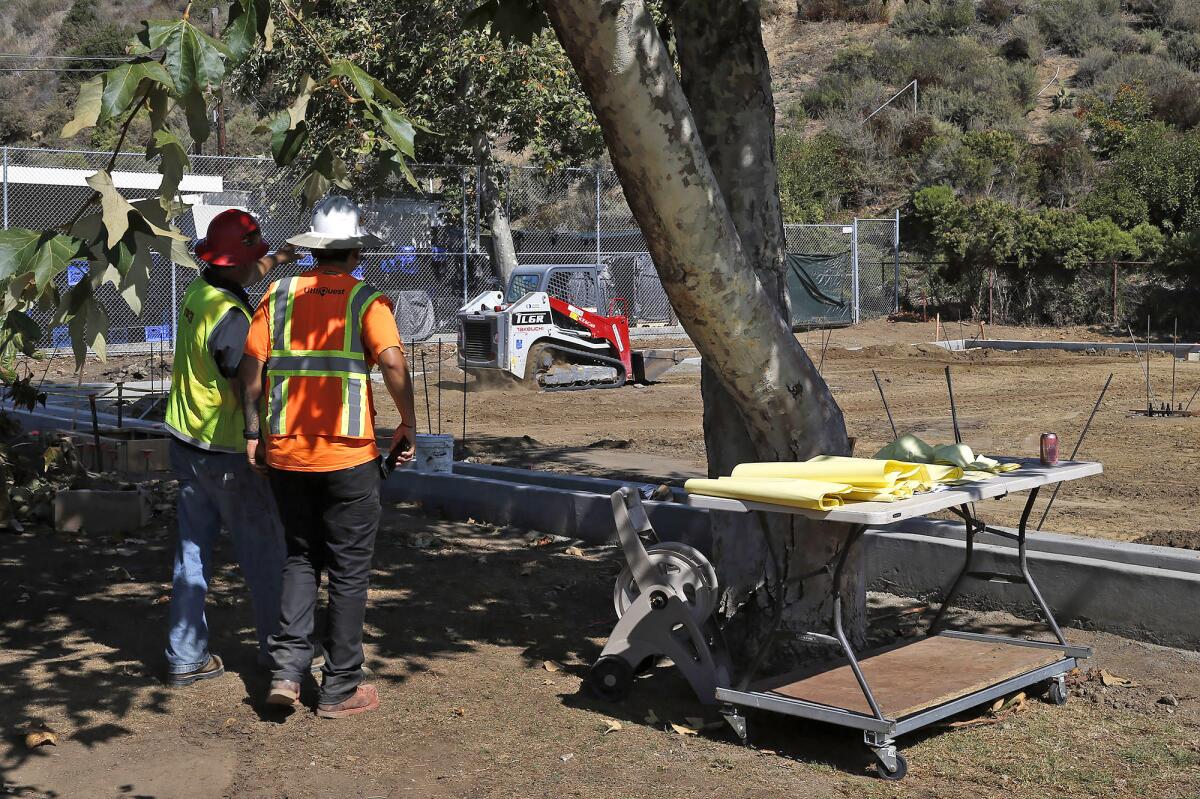
Stationed between the city’s Alternative Sleeping Location for persons experiencing homelessness and the Laguna Beach Dog Park, the replacement site will be equipped to accommodate patient capacity similar to what the center can now handle.
“We’ll have a full-functioning rescue rehab facility, as we do now,” said Jorge Villa, director of rescue and logistics at Pacific Marine Mammal Center. “The only difference is we’re not on site here at our barn. We’re across the way, but we’ll be able to accommodate about the same number of animals that we do currently, so sea lions, elephant seals, and the rest of the marine mammals that we normally pick up that strand.”
Among the features at the temporary site are five small pools, two large pools, two dry areas, and two ICU units. The facility required some space at the north end of the dog park. Sound-deadening fencing separates the new site from the dog park.
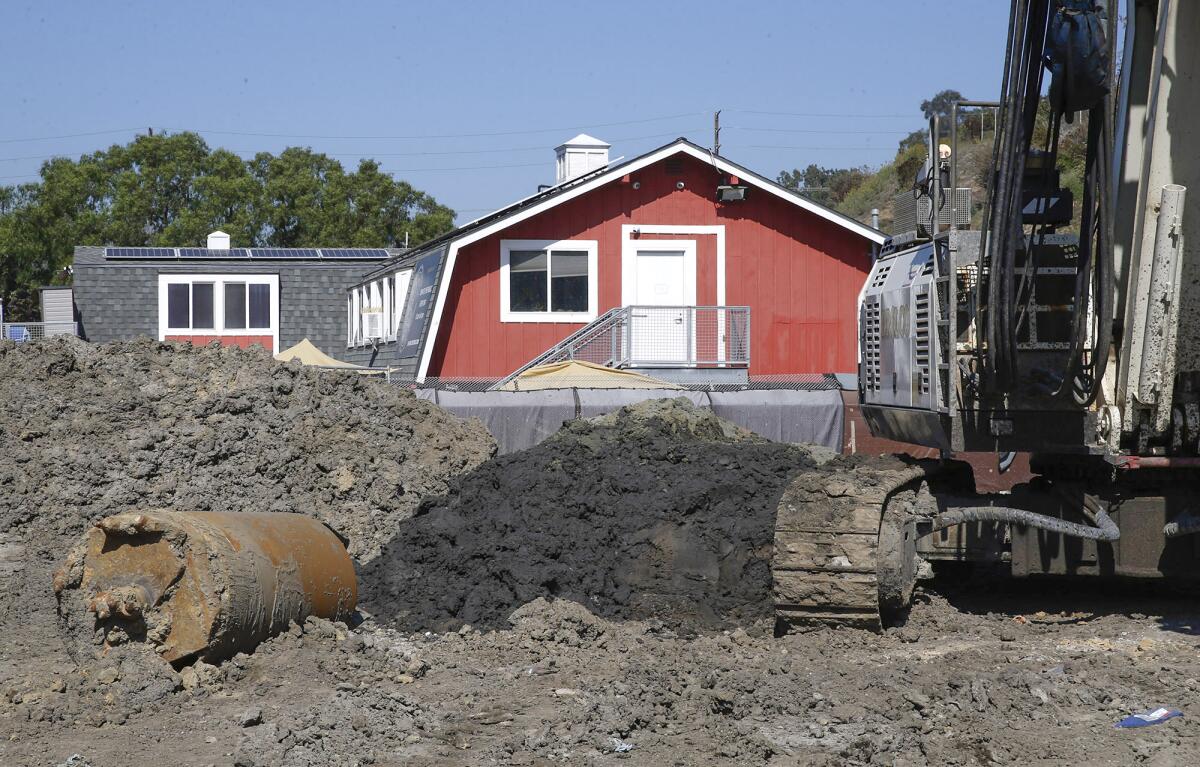
“When I went to attend the Planning Commission meeting for this topic, I was bookended by representatives of the Friends of the Dog Park, and I was thinking, ‘Uh, oh. What’s happening here,’” Gray said. “They said, ‘No, we’re here in support of it. We think this is great.’”
Gray expressed his appreciation for the collaboration that will help continue the center’s operations through the expansion process. He added that the portion of the park utilized by the center will be restored upon completion.
Major renovations at the center are expected to enhance the patient treatment capabilities and the educational opportunities for its visitors. A funding gap of about $7 million remains.
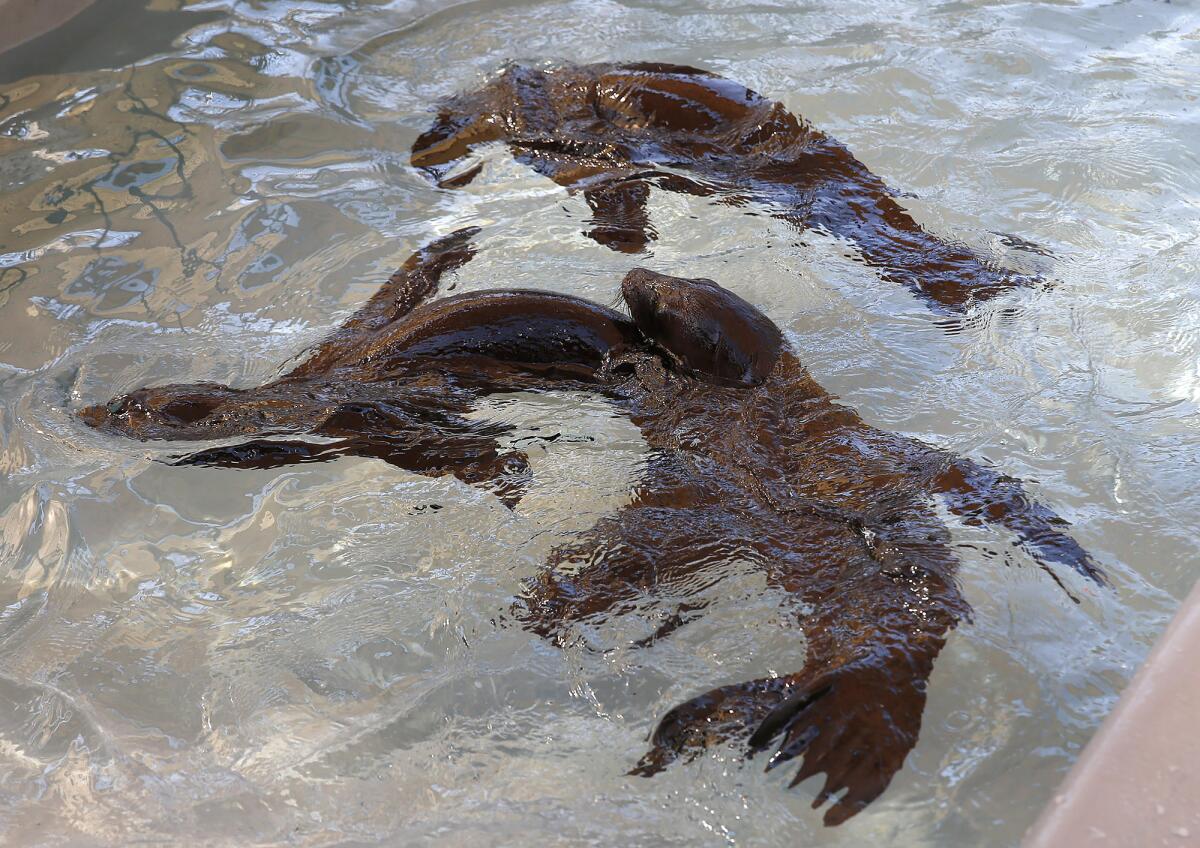
Pacific Marine Mammal Center closed its doors to the public on Oct. 22. The closure is expected to last until the expansion project wraps up in the fourth quarter of 2024.
Prior to the closure, the center was getting ready to say goodbye to its final three patients of the season. The trio of baby sea lions — Kenny, Miley and Raindrop — were born at the center after their mothers were brought in as rescues due to a toxic algae bloom.
“The births of all three of them were fairly uneventful,” Dr. Alissa Deming said. “They all came out very strong, normal neurologic behavior, acting like what you would expect [of] normal baby sea lions — vocalizing, interacting and trying to suckle on their mothers, and so we decided to just monitor them and see if we were going to see the impacts of the domoic acid exposure, instead of reflexively euthanizing them.”
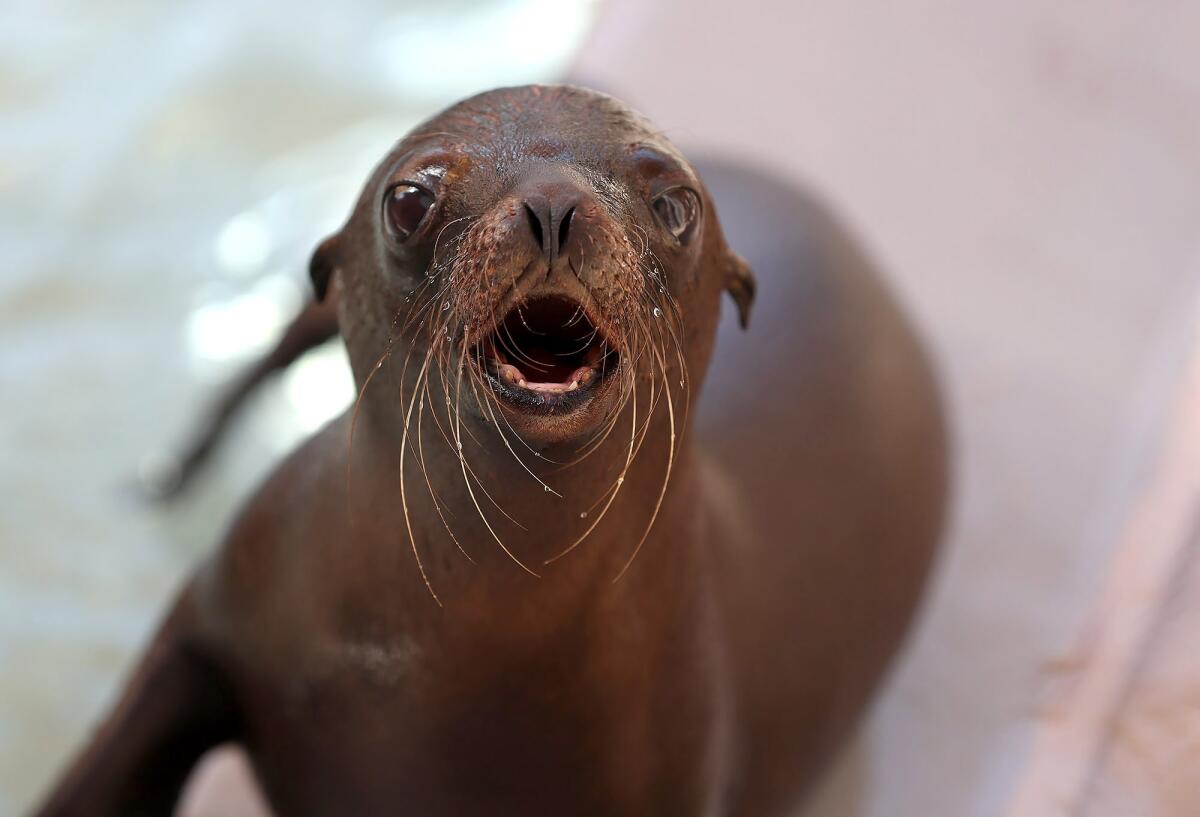
Kenny, Miley and Raindrop were all born around the middle of June. Deming said that they were being transferred to SeaWorld San Diego, where they could be integrated with more of their own kind. The end goal is to prepare the sea lion pups to go to their ocean home.
“SeaWorld is a better, closed-off location for them not to see people because we need to raise them to be wild sea lions,” Deming added. “We don’t want them approaching people after we release them. They need to stay away from fishing boats and have good manners for a wild sea lion, so having them in a facility where they’re not seeing as many people on a regular basis will give them the best chance possible for that.”
All the latest on Orange County from Orange County.
Get our free TimesOC newsletter.
You may occasionally receive promotional content from the Daily Pilot.




